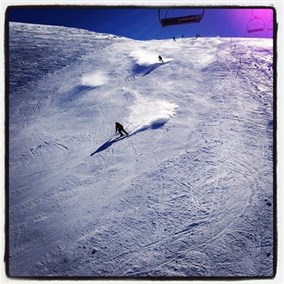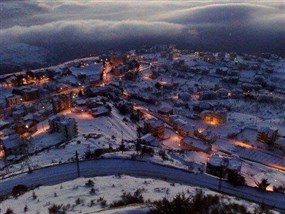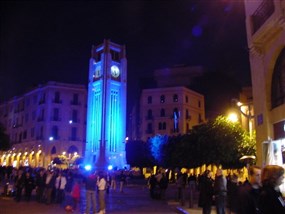This article is written by: Ana Sánchez Granado
www.anianywhere.com
Beirut and Lebanon have been on my bucket list for ages but I never even knew why. Most of the news coming from Lebanon is either bad or very bad and there are always travel warnings against visiting this country. However, for some reason, Beirut was calling me, and this spring I finally decided to ignore the common belief that Lebanon is a dangerous place and travel to Beirut…

I didn’t even tell most of my friends I was going to Lebanon because I knew they would be worried and ask me annoying questions such as ‘why would you go there?’ or ‘Isn’t Beirut dangerous?’. I just knew I would be fine and it would be a fantastic trip. Now that I am back I can say it loudly, Lebanon is not only very safe, but also a beautiful, interesting and surprising destination.
Before my trip, I noticed there is almost no information online about backpacking in Beirut and Lebanon. I would like to change this and give you some suggestions and advice about traveling to this fascinating corner of the world. Get ready,this is going to be a long post. But, hopefully by the end you will want to visit this beautiful and safe country!
Beirut and Lebanon: some reasons to go
- Lebanon is an underestimated destination with lots of historical places, wonderful nature, crystal clear water beaches and even ski slopes.
- Beirut is the party capital of the Middle East: Beirutis are fun loving people who have learned how to enjoy life despite the wars they have faced.
- Lebanese food is to die for.
- Lebanon has the much talked about East meets West feel!
- People: Lebanese locals are known for being very friendly and open minded.
- Non-touristic. Since many people think it is dangerous, there is not mass tourism or something like that in Lebanon. In other words, this country is great if you are looking for the ultimate traveler experience.
- Lebanon is so small that you really can see a lot of the country in a short time.

Beirut and Lebanon in 7 days – Top best things to do
One of the best things about Lebanon is that the country is so small you can visit a lot of it in a short period of time. I recommend staying in Beirut as your base and doing some daytrips from there. Even though it is a small country, you won’t get bored as there are many things to do. Here you have some suggestions for your Lebanon itinerary:
01 | Beirut
Beirut should be the starting point and your base from where to visit other places in Lebanon. It is a great city itself that will keep you busy for a few days and many nights (did I tell you nightlife is good here?).
I recommend downloading a GPS offline app that you can use on your phone without internet (such as Maps.me or Here) and explore the city by foot. Beirut is hilly and has a lot of stairs, but walking is nice and totally doable. Public transport is almost non-existent, but if you need to, you can always take a taxi (service). I will tell you more about how to get around in Beirut later.
For a first day in Lebanon, I recommend making initial contact with the country by exploring its capital. For example, you could have a walk from the eastern area of Mar Mikhael all the way to the Corniche. This is a long walk but very much worth every step and the best way to discover many great aspects of Beirut.
Mar Mikhael is a hipster area. Check out Armenia Street if you fancy cool cafes, pubs and street art.

Right after Mar Mikhael, you will find the neighborhood of Gemmayzeh, a hub of culture and nightlife. In that area, you can visit the Sursock Museum (free of charge). Even if you are not an art lover, the building is majestic and worth seeing!
If you continue walking to the West, you will soon reach Beirut Central District (BCD, aka downtown), which was the centre of the Lebanese Civil War back in the 80’s. I guess it is worth exploring this district once as there are lots of landmarks such as the Place d’Etoile, the Beirut Souks, the Mohammad Al-Amin Mosque and the Martyrs Square. However, as nice and clean as it looks, I found that this district lacks personality in its current state. BCD was beautifully restored after the war but became so fancy and expensive that not many people can afford to live there anymore, and it is almost empty now.

West from Beirut Central District, you will reach the university district of Hamra, which is much more alive with lots of students, cafes, restaurants and bars. In Hamra, you can visit the nice campus of the American University of Beirut (AUB), one of the most prestigious universities in the Middle East.
Directly north of Hamra, you will find the seafront Corniche and the Pigeon Rocks, Beirut’s most famous natural landmark. After this long walk, you will probably want to grab a drink and relax while enjoying the nice sea views in one of the cafes in Raouche.

The Pigeon rocks are the most famous landmark of Beiut.
Lebanon Beirut and Lebanon on a budget – All you need to know!
Beirut and Lebanon on a budget – All you need to know!
AnaJune 20, 2016Lebanon, Travel
Beirut and Lebanon have been on my bucket list for ages but I never even knew why. Most of the news coming from Lebanon is either bad or very bad and there are always travel warnings against visiting this country. However, for some reason, Beirut was calling me, and this spring I finally decided to ignore the common belief that Lebanon is a dangerous place and travel to Beirut…

I didn’t even tell most of my friends I was going to Lebanon because I knew they would be worried and ask me annoying questions such as ‘why would you go there?’ or ‘Isn’t Beirut dangerous?’. I just knew I would be fine and it would be a fantastic trip. Now that I am back I can say it loudly, Lebanon is not only very safe, but also a beautiful, interesting and surprising destination.
Before my trip, I noticed there is almost no information online about backpacking in Beirut and Lebanon. I would like to change this and give you some suggestions and advice about traveling to this fascinating corner of the world. Get ready, this is going to be a long post. But, hopefully by the end you will want to visit this beautiful and safe country!
Beirut and Lebanon: some reasons to go
- Lebanon is an underestimated destination with lots of historical places, wonderful nature, crystal clear water beaches and even ski slopes.
- Beirut is the party capital of the Middle East: Beirutis are fun loving people who have learned how to enjoy life despite the wars they have faced.
- Lebanese food is to die for.
- Lebanon has the much talked about East meets West feel!
- People: Lebanese locals are known for being very friendly and open minded.
- Non-touristic. Since many people think it is dangerous, there is not mass tourism or something like that in Lebanon. In other words, this country is great if you are looking for the ultimate traveler experience.
- Lebanon is so small that you really can see a lot of the country in a short time.

Streets of Beirut and the Mohammad Al-Amin Mosque.
Beirut and Lebanon in 7 days – Top best things to do
One of the best things about Lebanon is that the country is so small you can visit a lot of it in a short period of time. I recommend staying in Beirut as your base and doing some daytrips from there. Even though it is a small country, you won’t get bored as there are many things to do. Here you have some suggestions for your Lebanon itinerary:
01 | Beirut
Beirut should be the starting point and your base from where to visit other places in Lebanon. It is a great city itself that will keep you busy for a few days and many nights (did I tell you nightlife is good here?).
I recommend downloading a GPS offline app that you can use on your phone without internet (such as Maps.me or Here) and explore the city by foot. Beirut is hilly and has a lot of stairs, but walking is nice and totally doable. Public transport is almost non-existent, but if you need to, you can always take a taxi (service). I will tell you more about how to get around in Beirut later.
For a first day in Lebanon, I recommend making initial contact with the country by exploring its capital. For example, you could have a walk from the eastern area of Mar Mikhael all the way to the Corniche. This is a long walk but very much worth every step and the best way to discover many great aspects of Beirut.
Mar Mikhael is a hipster area. Check out Armenia Street if you fancy cool cafes, pubs and street art.

Painted stairs in Armenia Street, Mar Mikhael (Beirut).
Right after Mar Mikhael, you will find the neighborhood of Gemmayzeh, a hub of culture and nightlife. In that area, you can visit the Sursock Museum (free of charge). Even if you are not an art lover, the building is majestic and worth seeing!
If you continue walking to the West, you will soon reach Beirut Central District (BCD, aka downtown), which was the centre of the Lebanese Civil War back in the 80’s. I guess it is worth exploring this district once as there are lots of landmarks such as the Place d’Etoile, the Beirut Souks, the Mohammad Al-Amin Mosque and the Martyrs Square. However, as nice and clean as it looks, I found that this district lacks personality in its current state. BCD was beautifully restored after the war but became so fancy and expensive that not many people can afford to live there anymore, and it is almost empty now.

Saint George Maronite Cathedral just next to Mohammad Al-Amin Mosque in Beirut Central District.
West from Beirut Central District, you will reach the university district of Hamra, which is much more alive with lots of students, cafes, restaurants and bars. In Hamra, you can visit the nice campus of the American University of Beirut (AUB), one of the most prestigious universities in the Middle East.
Directly north of Hamra, you will find the seafront Corniche and the Pigeon Rocks, Beirut’s most famous natural landmark. After this long walk, you will probably want to grab a drink and relax while enjoying the nice sea views in one of the cafes in Raouche.

The Pigeon rocks are the most famous landmark of Beiut.
02 | Baalbek and the Bekaa Valley

A daytrip to Baalbek is a must in Lebanon!
A highlight of my stay in Lebanon was the daytrip to the Bekaa Valley and Baalbek’s ruins, about 85 km northeast of Beirut and only 10 km from the Syrian border. Also known as the ‘Sun City’, in Baalbek you will find the most impressive and best preserved ancient Roman ruins in Lebanon.
Famous for its Roman ruins, the town of Baalbek is also infamous for being the administrative headquarters for the Hezbollah party. Although I found it very safe, it is a place you should not visit on your own but with a local guide. I can highly recommend Mohammad, the tour guide we traveled with. He is originally from Baalbek so he is the guy to go with! He charges 100$ for the car trip from Beirut (meaning if you find 3 travel buddies, you will only have to pay 25$ each). He usually works with Hostel Beirut. You can ask for his number there, but you don’t need to stay in the hostel to use his services. Contact me and I will be happy to email you his phone number/Whatsapp.
Apart from Baalbek’s ruins, Mohammad also brought us to some other places around the Bekaa Valley such as the majestic Sayyida Khawla Shrine. This is an important pilgrimage site in the region where the great granddaughter of Prophet Muhammad is supposed to be buried.

After the shrine and a hearty Lebanese lunch, our tour guide brought us to a valley where there was still snow. I didn’t know Lebanon also has great skiing spots! The views and the whole roadtrip were incredible.

Lebanon is such a diverse country! Do you want snow or crystal clear beaches? Here there is everything!
03 | Jeitta Grotto
Located around 20 km North of Beirut, Jeita Grotto is a system of two interconnected limestones caves (Upper and Lower Grotto) and proof that Mother Nature is much more creative than humans. It is so hard to believe that all the amazing rock formations (stalagmites, stalactites, columns, mushrooms, etc.) inside the caves are the result of a natural process!
Unfortunately, taking photos inside the caves is not allowed. Google for some pictures, or better yet go there and see this intricate creation of nature with your own eyes.
The entrance (18.150 LL or 12$) includes a ride in a cable car to access the upper cave, a walking tour in the upper cave, a train ride to access the lower cave and a boat trip to explore the underground lower cave.
Jeita Grotto was one of top 14 finalists in the New 7 Wonders of Nature competition. I am not sure why it was not selected as one of the winners. But, having visited several caves across the world, I have to say that for me none of them were as impressive as the Jeita Grotto!

Scene of our road trip to the north of Lebanon.
04 | Byblos
Another must-see is the historical city of Byblos (Jbail), a picturesque seaside city with a great beach perfect for a daytrip from Beirut. UNESCO World Heritage Site, Byblos is believed to be one of the oldest cities in the world as it was founded in 7000BC and continously inhabitated since 5000BC until today.

The historical seaside city of Byblos (Jbail), a UNESCO World Heritage Site.
A visit to Byblos is a chance to walk through the ruins of the many successive civilizations (Phoenicians, Romans, Byzantines, etc.) that made up Lebanon. Byblos is also directly associated with the spread of the modern European alphabet. Not to miss!
05 | Mleeta
If you like history, you should not miss the Mleeta Resistance Landmark (aka Hezbollah Museum). The outdoor museum was established by Hezbollah in 2010 in a mountainous area that served as the strategic and military base of the resistance against Israel.

Views of the outdoor museum Mleeta Resistance Landmark (aka Hezbollah Museum).
The museum is open from 9:00 until sunset and the admission of 4,000 LBP includes a free guide. I am not sure how to access this place by public transport, but we again went there with Mohammad. The outdoor museum is an experience and well worth the travel if you are interested in understanding Lebanon’s recent history from Hezbollah’s point of view.
06 | Harissa and Jounieh

The panoramic views of Jounieh from Harissa are incredible!
On the way to Byblos, a nice stop is the coastal city of Jounieh (around 21 km north of Beirut). The main attraction in Jounieh is its Teleferique (9000 lb/2 ways). The cable car will take you from the city center to the mountaintop statue of Harissa, also known as Our Lady of Lebanon. The immense Virgin Mary statue is an important Christian pilgrimage site. But even if you are not interested in religion, you will love the breathtaking panoramic views of the bay of Jounieh that you will get from the top of the shrine.
07 | Tripoli
The second largest city in Lebanon feels very different to Beirut. With many bullet holes still clearly visible, wounds from the Civil War have yet to be healed. In addition, Tripoli also suffered severe Sunni and Alawite clashes (2013-2015) between supporters and opponents of Al Assad’s regime in Syria. Although currently Tripoli is generally fine to visit, the omnipresence of military forces all over the city is really impressive, and you will definitely get a feel for how hard the recent history of this city has been.

Decadence and elegance of Tripoli.

Streets of Tripoli.
Having said that, assuming there is no violence at the moment, the bustling and labyrinthine Old City full of madrassas, mosques and hammams; the impressive and well preserved Citadel of Raymond de Saint-Gilles (a medieval Crusader fortress); the traditional colorful souqs where craftsmen still work as they have done for centuries; and the amazing food and sweets make a daytrip to Tripoli definitely worth the experience.

Views of Tripoli from the Citadel of Raymond de Saint-Gilles.
I again recommend doing the daytrip to Tripoli with my friend Mohammad. He will know what the up to date situation is and will never take you anywhere if it is not 100% safe. In addition, he will probably make a few stops along the way and show you other interesting places like the Mussaylha Fort in Batroun.

Mussaylha Fort is close to Batroun (Lebanon)
Arriving and Departing from Beirut
If you fly to Lebanon, you will land in the Beirut – Rafic Hariri International Airport. Some budget airlines fly to Beirut via Istanbul so you might need more than one flight to get to Lebanon. As you are travelling to a different country, you need to do a research about the visa and the documents you may need to enter Lebanon. Passport holders of 79 countries are eligible for visa on arrival as long as they don’t have any Israeli stamps.
To get to the city, you can arrange an airport pickup with White taxi. For that, just email them at: reservation@whitetaxi.me with your flight details and your destination. They charge 26,000 L.L or 17$.
The security at the Beirut airport is pretty tight, so for your departure you should definitely try to get there a few hours before your flight time. Expect to have to wait in the passport control line and go through some security checks.
Where to stay in Beirut
Beirut is full of upscales hotels. But, I guess you would not be reading this post if you could afford that kind of accommodation, so I will go directly to the budget options. Although there are not many budget hostels and Airbnb and Couchsurfing are also not so popular, there are luckily a couple of good options:
Hostel Beirut – Although its facilities are basic and maybe not the most comfortable, staying at Hostel Beirut probably was the best hostel experience I have ever had. Besides its good location (very close to the bar scene in Armenia street), what I enjoyed most was the friendly vibe of this hostel. Very social, communal and authentic, Hostel Beirut is ideal for solo travelers or anyone who wants to enjoy and make new friends. Another thing to consider is Hostel Beirut was set up as an NGO, so the money that you pay actually goes towards educational projects for young refugees. They can also help you if you are insterested in volunteering or studying Arabic language. I highly recommend staying at Hostel Beirut!
- Saifi Urbans Garden – I didn’t stay at Saifi Urban Gardens but had dinner at its restaurant (that was very good) and saw the nice looking hostel facilities. This hostel is newer than Hostel Beirut and seems to be in better care too. Their shared rooms are also a bit cheaper (18$). I guess if comfort is your priority, this hostel might be a better option for you, but I would still choose Hostel Beirut for its vibe and in order to support the social projects they work in.
How to get around in Beirut
Since almost everyone in Lebanon has a car, Beirut does not really have a great public transport network. However, there are ways to get around. Something you will need to remember is the difference between service, servicein and taxi.
- Service: Service is basically a shared taxi and the most convenient way to get around in Beirut. To get one, just ask the taxi driver “service?” and mention your destination area. If the driver nods, you can get in and pay the service ride of 2,000 L.L (around 1,3$). In a service, they will pick up other passengers, and go whatever way they think will have the least traffic and the most people waiting for a service. If you don’t get service the first time, try asking different cabs.
- Servicein: If no one agrees to take you for 2,000 L.L, you can try to negotiate a servicein (literally 2 services) and it is basically the same but for the price of 4,000 L.L. They will pick up others in this as well.
- Taxi: If nobody wants to take you for a reduced price, you can always pay for a regular taxi. Taxis in Lebanon have no meters, so you will need to negotiate the price before getting in. The price should be no more than 10,000 L.L. anywhere in the city. İn a taxi, they aren’t supposed to stop for others and will take you to your destination directly.
- Buses: It seems within Beirut there are a few numbered buses that actually go on a specific route. However, they are not very reliable and they have no timetable. I think they are not worth the hassle and it is better and quicker to get a service instead. Of course, there are also buses to go outside of Beirut. The main bus stations are Dowra, Cola and Charles Helou.
- Uber: If all of above sounds too complicated, you can always use Uber in Beirut (providing you have mobile internet).

Live, love Beirut.
Eating and drinking in Beirut
Welcome to the paradise of food! Traveling to Lebanon is certainly a feast for all senses! Lebanese cuisine is great and for everyone (as a vegetarian, I really loved the Lebanese falafel, hummus and the fattoush). Some nice and inexpensive Lebanese restaurants I rememeber are: Mezyan (Hamra), Le Chef (Gemmayzeh), Cafe Em Nazih (Gemmayzeh) and Falafel Karim Sahyoun (Hamra).

Enjoying a Beirut beer in Byblos beach. Life could not get better than this!
Drinking in Beirut is not cheap, but do try Lebanese wines and the local beers (Almaza and Beirut).
Beirut and Lebanon – other info
- Money: the Lebanese Lira (L.L.) is the currency of Lebanon. The exchage rate is 1,500 L.L for 1$ U.S.D. However, you don’t really need to exchange money as USD are accepted everywhere and commonly used. If you pay with USD, sometimes you will get your change in Lebanese lira which will be useful for small payments (paying for services, etc.).
- Power cuts: they happen daily for 3 hours on average, but most hotels have a generator.
- Checkpoints: there are a lot of checkpoints (even inside of Beirut) so bring your passport with you at all times.
- More: Internet is really slow, and you might not have hot water depending on your luck…

Roads of Lebanon and Syrian mountains in the background.
Many people have the idea that Lebanon is not a safe country due to its history, the Muslim religion and the ongoing war in Syria. But the truth is I didn’t feel any security concern at all while I was there.
I wrote this article to inspire you to book your ticket and visit Beirut and Lebanon as soon as possible. When you leave the prejudices behind, you will be surprised by the beauty of this country and its people. Don’t let the media cheat you out of visiting Lebanon![anianywhere]







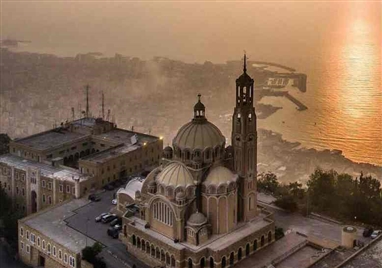














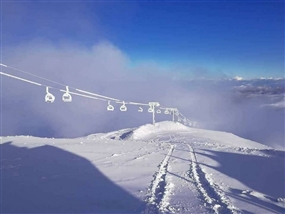
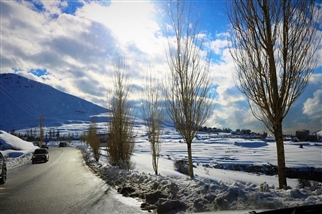
-151029114153325.jpg)
-150908103833282.jpg)
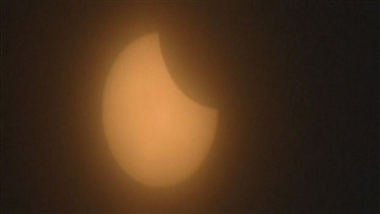

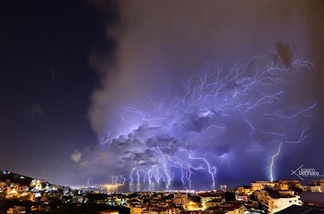
-140410013152695.jpg)
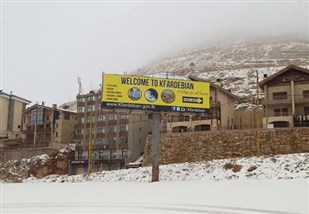

-131205120123197.jpg)

